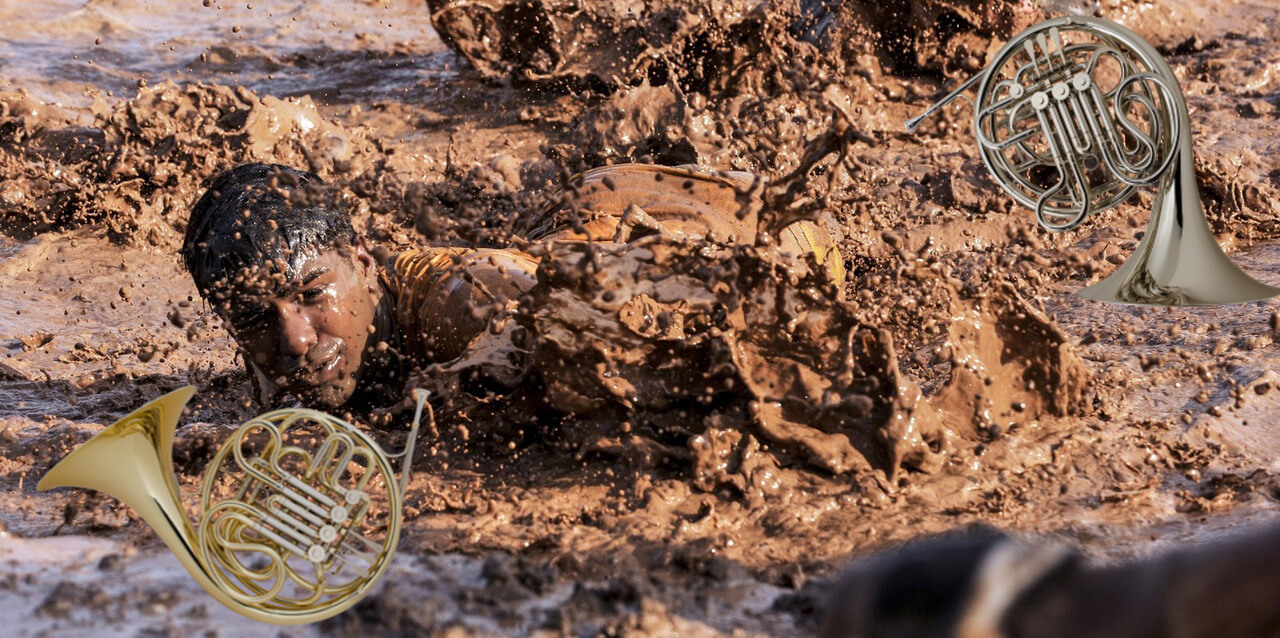If you’ve been in a band or orchestra for more than a few months, you’ve probably been told the importance of learning your scales and arpeggios.
While lots of students (me included) rolled their eyes at the 100th time they are told this, it really is true.
Why Are Scales Important?
For brass instruments in general and the French horn in particular, there are two frameworks that make getting around on the instrument and learning new music much easier: the harmonic series and scales/arpeggios.
The harmonic series is how all brass instruments work. Since the horn plays higher in the harmonic series than other brass, it’s even more important to be familiar with it. You should know at least the 1-12 partials (note names and intonation tendencies) on all 14 different fingering combinations for a standard double horn.
On the other hand, scales and arpeggios are how (most) composers write music. This is drastically oversimplified, of course (and some composers definitely don’t use scales!), but having proficiency in all the major and minor scale forms and their arpeggios will do wonders for sight-reading and technique.
Learn Your Scales
To help you (and my students) learn scales, I’ve made a few different scale sheets.
I’ve made sheets with major scales (both 1 octave and 2 octaves), as well as all three different forms of minor scales (natural, harmonic, melodic) for students to learn these scales.
You can find these scale sheets here:
1 Octave
2 Octave
Once these scales are learned in their basic form, though, it’s time to develop more scale fluency.
To that end, I’ve created a few different extended scale exercises.
Extended Scale Exercises
Clarke Scale Exercises
The first step to scale fluency is becoming familiar with the first 5 notes in every major and minor key. To that end, I find that this variation on the famous Clarke Study #2, originally written for trumpet, is great.
These exercises are quite short, and it doesn’t take very long to add a few of these (starting in a comfortable range, of course) to a warm-up session. You can either go chromatically by doing an octave (or more) of these each day, or you pick a “key of the day” and do all the major and minor studies of that key in all the octaves you are able to play.
These should begin slowly (quarter = 72 or slower if necessary) and entirely slurred. The slow tempo and slur pattern help to develop good finger rhythms and coordination, which will be important if you want to speed these up!
Extended Scale Exercises
Once the Clarke studies are more fluid, you can start to practice the entire scale in a variety of ways.
My Extended Scale Exercise sheets contain lots of different ways to tackle each key. It covers major and (harmonic) minor fingering patterns, modes, and intervals for each key.
While each key has lots of exercises (14 pages!), not every single exercise should be done in a single sitting. Rather, pick a key and practice one scale pattern and one interval pattern.
This way you can practice everything over the course of a week or so, but not be overwhelmed in a single practice session.
Like the Clarke exercises, all these should be done slowly and smoothly at first, in order to make sure that the fingers, tongue, and air are working together efficiently. Additionally, for some keys, the upper notes may be a bit too high. It is okay to skip these measures at first and only practice the portions of the scale(s) that you’re able to do comfortably!
Extended Arpeggio Exercises
In addition to scales, it’s also important to be comfortable with arpeggios.
Like the scale sheets, these extended arpeggio exercises cover quite a lot of ground, but not everything needs to be practiced every day.
The arpeggio inversions are very good to practice for intonation work. The chord progression (I-IV-I-V7-I) exercise is useful both for ear training (this chord progression shows up a LOT) but also for flexibility.
To save space, I’ve only indicated the accidentals for the I-IV-I-V7-I progressions, but make sure you practice both these progressions and the arpeggio inversions in both major and minor.
Finally, I’ve found the arpeggio mode exercises especially challenging and energizing. Start off with the triplet version (slowly), and add in the 16th note version once you’ve gotten familiar with the chord progression and fingering pattern.
The arpeggio mode exercises are only written out in the major key since the major scale will actually cover major (3), minor (3), and diminished (1) arpeggio patterns.
Need More Help With Scales?
As always, if you have any questions about learning scales in general or these exercises in particular, don’t hesitate to send me a message via my contact form or leave a comment below!
If you find that you need some additional help with scales and arpeggios (or any other playing issues) I offer French horn lessons both in-person and online. You can find out more information on those lessons on my French horn teaching page.
One final thing – if you’ve found this site useful, it would mean a lot if you could donate to support this site. I enjoy providing materials for students (and teachers), but this material does take time to create. Thanks!

